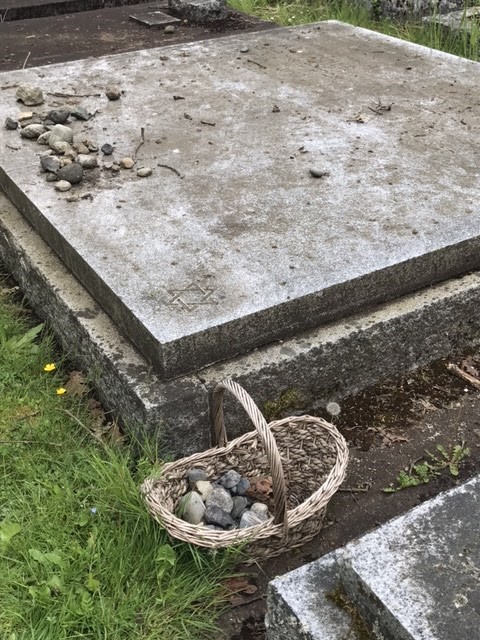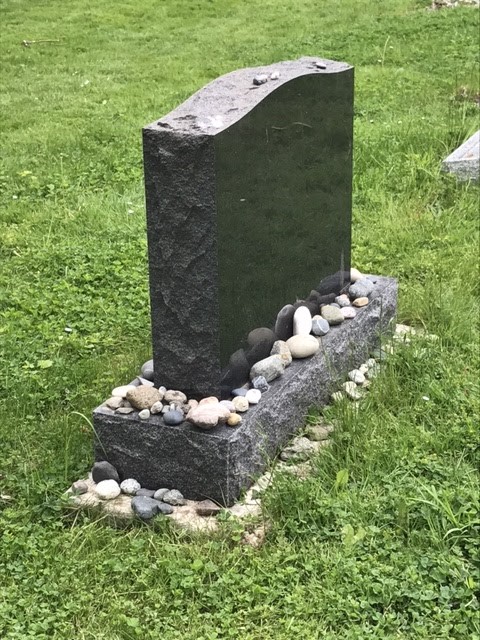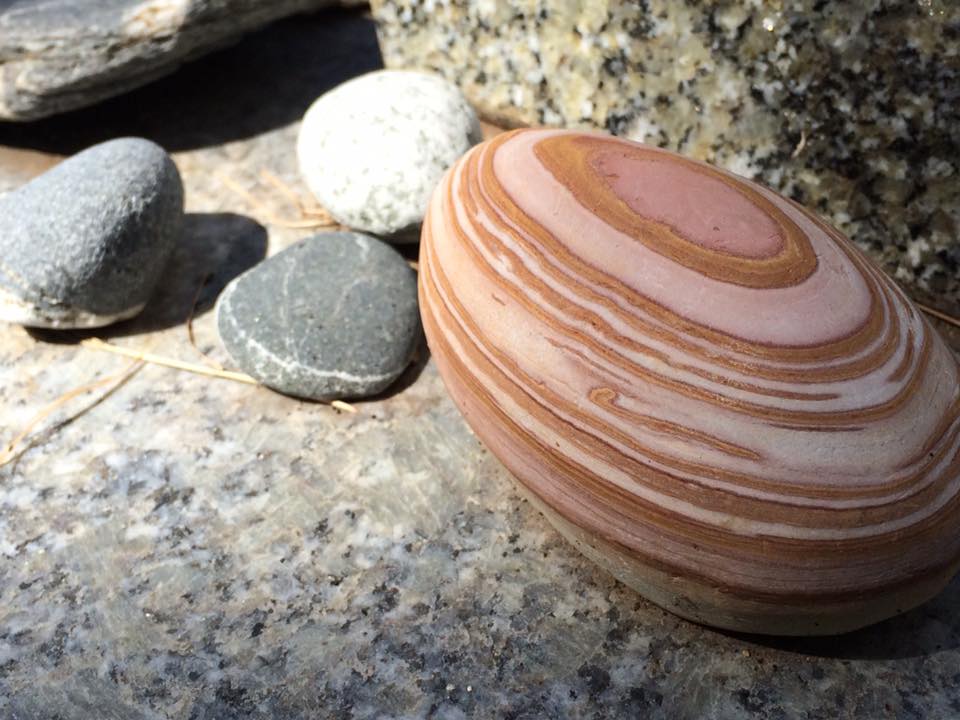At our first visit to Congregation Emanu-El Cemetery, we were confused as to why there were so many stones of varying sizes and colors lying on and around the monuments. Interested in learning about this specific mourning ritual of placing stones on the graves of the deceased, we began to look for answers. Therefore we decided to do some research and found Shiva.com and MyJewishLearning.com. One of the reasons why we chose these two sources was their ease of accessibility and their comprehensiveness.
Why a stone? This is the question that we were asking when we found Shiva.com– a website that delves into Jewish mourning explaining many of the customs and beliefs surrounding their practices. We found this website useful since it offers multiple viewpoints. Some of these practices are so antiquated that it is hard to trace their beginning.
The first part of the website that we discovered was titled “Placing a Stone”, which describes the practice of placing a stone on a grave in place of flowers. This stone is usually placed on the grave near the headstone with the left hand by someone visiting the gravesite. On this webpage, several rabbis and scholars explain the significance and the beginning of this ritual. One describes this act as a way to preserve the gravesite so that it can always be found. Another that the headstone symbolizes the soul of the deceased and that the stone left behind is the soul of the one who visited the grave. See below for a selection of images of stones found within our cemetery.
This site is also full of information and sections that can aid in understanding more about Judaism as a whole. This is particularly important to us since a major part of our overall project is to build a profile of historical pioneers who are buried in this Jewish cemetery. Therefore understanding and appreciating what their beliefs and customs are can allow us to be respectful of them.
Some of the other sections within this website are “Visiting the Cemetery” which describes the appropriate times of visiting the grave, such as 7 days after the burial when sitting shiva is complete. There is also a section named “Sitting Shiva” which hyperlinks to descriptions of who sits shiva, mourner observances, the first meal etc.
MyJewishlearning.com– a repertoire of Jewish tradition funded by the Samuel Bronfman Foundation and the William Davidson Foundation. Almost everything one wants to know about the Jewish life and Judaism- from food to history to beliefs and rituals- can be easily accessed here. Intrigued by the myriad of stones in the cemetery, our search landed us on this website.
According to this site, there are several explanations regarding this ritual. In earlier times, stones were used to keep priests (kohanim) at a distance of at least four feet from the grave as they would, by the Talmudic law, become impure if they were to make contact. A second interpretation being that the permanency of stones are believed to keep souls bound to earth as opposed to the ephemeral nature of the flowers. However, there is another interesting interpretation of this ritual. The hebrew word for pebble is tz’ror which also means ‘bond’’. The bond, between the deceased and the mourner, is due to their [deceased] memory and the legacy left behind.
Amidst the search for answers, we have learned a lot about the mourning rituals of Judaism. Nonetheless, it has left us with more questions. We observed an interesting pattern in the cemetery: newer graves tend to have more stones than the older ones. It might imply an increase of visits made by the family members of the recently deceased. However, the reason behind the painted stones is unknown, but as mentioned by one of our Jewish friends, it is something that has begun in modern times. Even though the practice of placing stones has no scriptural basis, the Jewish mourners tend to perform this ritual with utmost reverence.
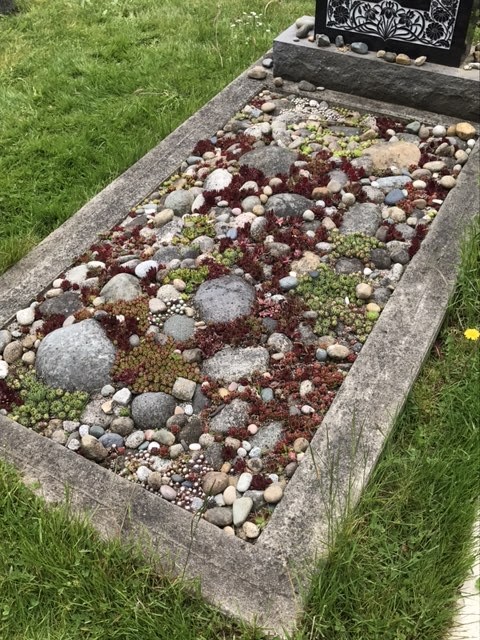
Above: Gravesite covered with a rock garden and succulents. Note the stones placed at the base of the gravestone. (Photo Credit: Morgan King)
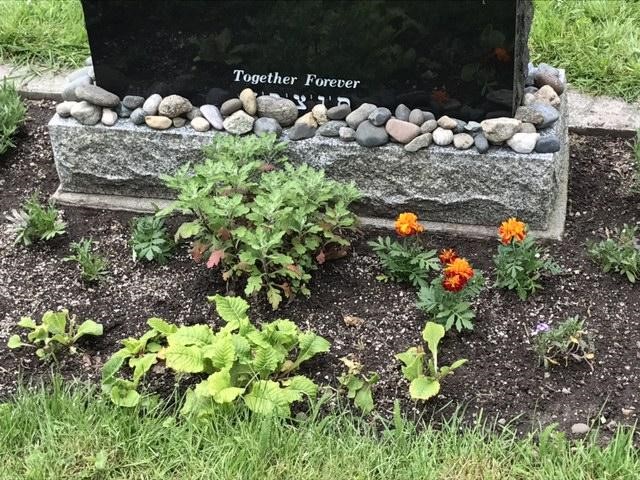
Above: “Together Forever” a gravesite in Emanu-El Cemetery. (Photo Credit: Morgan King)
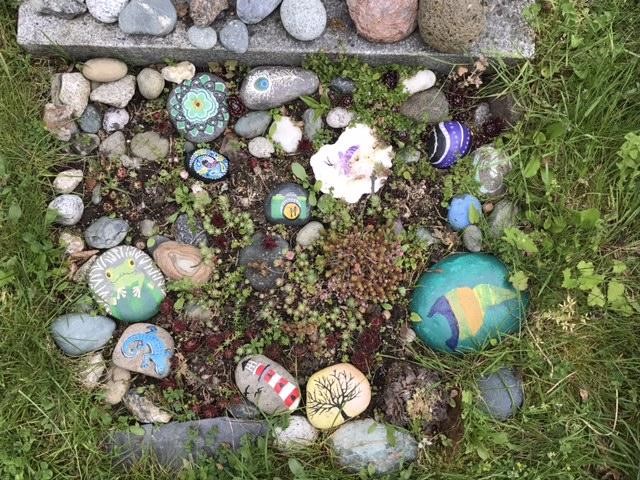
Above: Painted rocks on a modern grave. (Photo Credit: Morgan King)
Below: selection of other images of stones associated with graves in the cemetery.

